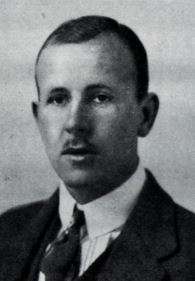Niels-Henrik Kolderup

Niels-Henrik Kolderup (31 January 1898 – 2 January 1971) was a Norwegian geologist, seismologist, politician for the Conservative Party and member of the Norwegian Parliament. He studied at the Norwegian Military Academy from 1916 to 1917 and was employed at the Bergen Museum in 1919, where his father Carl Fredrik Kolderup was a professor. He married Else Krabbe in 1928 and together they had four children: Lily, Kitty, Else Margrethe, and Gedske.
The son of Carl Fredrik Kolderup and Kitty Pedersen, he became a professor at the Bergen Museum in 1939 (the same year his father, Carl Fredrick retired), and at the University of Bergen in 1948. His research was primarily on geology and seismology. He was a deputy member of the Storting from the constiuency Bergen from 1945 to 1953. He was decorated Knight of the Order of St. Olav in 1967.
In 1918, Kolderup become a Second Lieutenant in the Norwegian military, then a First Lieutenant in 1925, and finally a Captain in 1935. He was arrested in 1941, during the Second World War, for being a part of the Norwegian resistance movement against Nazi occupation, and was taken to Grini, a concentration camp located near Oslo. He was released and then arrested again and then taken to Germany, where he spent three years in various concentration camps. These camps included, Natzweiler, Dachau, and Sachsenhausen. At the end of the war Kolderup was found nearly dead and paralyzed from the waist down. He spent time in Sweden recovering before returning home to Bergen.
References
- ↑ Steenstrup, Bjørn, ed. (1968). "Kolderup, Niels-Henrik". Hvem er hvem? (in Norwegian). Oslo: Aschehoug. pp. 311–312.
- ↑ Steenstrup, Bjørn, ed. (1973). "Fortegnelse over personer som siste gang er omtalt i utgaven 1968 med angivelse av deres dødsdatum". Hvem er hvem? (in Norwegian). Oslo: Aschehoug. p. 627. Retrieved 17 July 2014.
- ↑ "Niels-Henrik Kolderup" (in Norwegian). Storting.